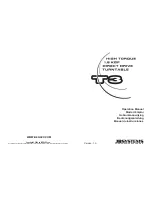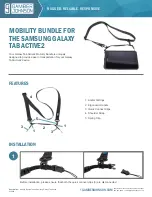
127
Appendix/Index
FCC Statement
This equipment has been tested and found to comply with the limits for a
Class B digital device, pursuant to Part 15 of the FCC Rules. These limits are
designed to provide reasonable protection against harmful interference in a
residential installation. This equipment generates, uses and can radiate radio
frequency energy and, if not installed and used in accordance with the
instructions, may cause harmful interference to radio communications.
However, there is no guarantee that interference will not occur in a particular
installation. If this equipment does cause harmful interference to radio or
television reception, which can be determined by turning the equipment off
and on, the user is encouraged to try to correct the interference by one or
more of the following measures:
·
Reorient or relocate the receiving antenna.
·
Increase the separation between the equipment and receiver.
·
Connect the equipment into an outlet on a circuit different from that to which
the receiver is connected.
·
Consult the dealer or an experienced radio/TV technician for help.
This device complies with Part 15 of the FCC Rules. Operation is subject to
the following two conditions: (1) this device may not cause harmful
interference, and (2) this device must accept any interference received,
including interference that may cause undesired operation.
Any changes or modifications to this device not expressly approved by
HUAWEI TECHNOLOGIES CO., LTD. for compliance could void the user’s
authority to operate the equipment.
Restrictions in the 5 GHz band:
Within the 5.15 to 5.25 GHz band, UNII devices will be restricted to indoor
operations to reduce any potential for harmful interference to co-channel
Mobile Satellite System (MSS) operations.
Disposal and Recycling Information
This symbol (with or without a solid bar) on the device, batteries (if included),
and/or the packaging, indicates that the device and its electrical accessories
(for example, a headset, adapter, or cable) and batteries should not be
disposed of as household garbage. These items should not be disposed of as
unsorted municipal waste and should be taken to a certified collection point
for recycling or proper disposal.
For more detailed information about device or battery recycling, contact your
local city office, household waste disposal service, or retail store.
Disposal of the device and batteries (if included) is subject to WEEE Directive
Recast (Directive 2012/19/EU) and Battery Directive (Directive 2006/66/EC).
The purpose of separating WEEE and batteries from other waste is to minimize
the potential environmental impacts and human health risk of any hazardous
substances that may be present.








































